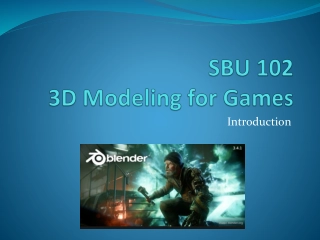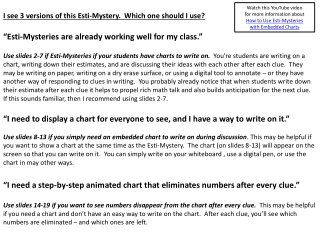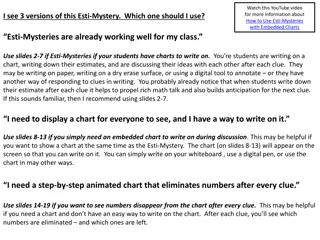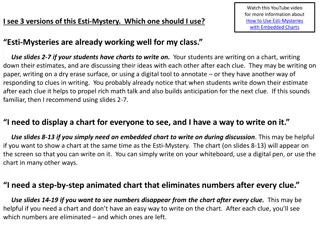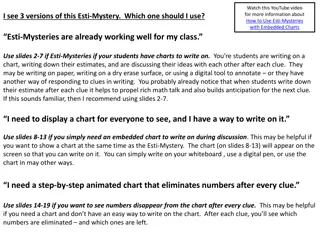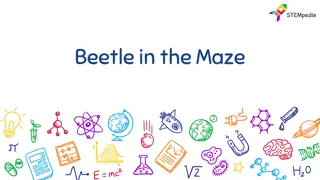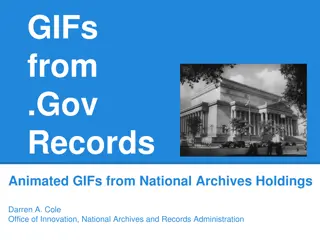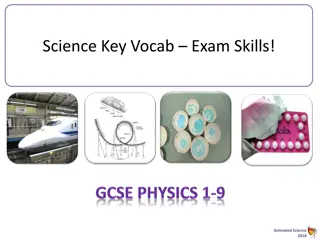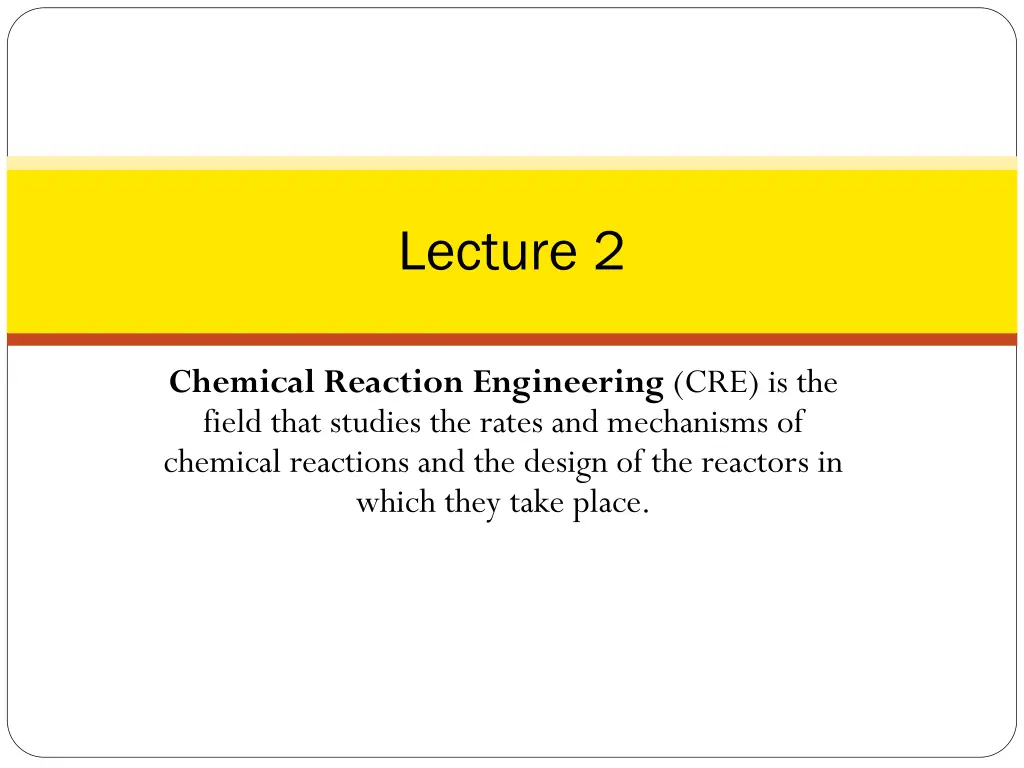
Chemical Reaction Engineering Fundamentals
The field of Chemical Reaction Engineering (CRE) explores rates, mechanisms, and reactor design of chemical reactions. Topics covered include reactor types, mole balances, conversion, and example problems. Dive into the essential principles of CRE to enhance your understanding of chemical processes.
Download Presentation

Please find below an Image/Link to download the presentation.
The content on the website is provided AS IS for your information and personal use only. It may not be sold, licensed, or shared on other websites without obtaining consent from the author. If you encounter any issues during the download, it is possible that the publisher has removed the file from their server.
You are allowed to download the files provided on this website for personal or commercial use, subject to the condition that they are used lawfully. All files are the property of their respective owners.
The content on the website is provided AS IS for your information and personal use only. It may not be sold, licensed, or shared on other websites without obtaining consent from the author.
E N D
Presentation Transcript
Lecture 2 Chemical Reaction Engineering (CRE) is the field that studies the rates and mechanisms of chemical reactions and the design of the reactors in which they take place. 1 1
Lecture 2 Lecture 2 Tuesday Tuesday Review of Lecture 1 Definition of Conversion, X Develop the Design Equations in terms of X Size CSTRs and PFRs given rA= f(X) Conversion for Reactors in Series Review the Fall of the Tower of CRE 2 2
Review Lecture 1 Reactor Reactor Mole Balances Mole Balances Summary Summary The GMBE applied to the four major reactor types (and the general reaction A B) Reactor Differential Algebraic Integral NA N dN A 0 A N dN = A t Batch A= r V A r V dt A t V =FA0 FA CSTR rA FA F dF A dFA dV A PFR = A V = rA dr A F 0 V FA F dF A PBR dFA dW= r A A = A W A r F 3 3 0 W
Review Lecture 1 CSTR CSTR Example Problem Example Problem Given the following information, Find V 3 dm = 10 3 dm min 0 = = 10 min 0 1 . 0 C V =? 0 A = C C = 0 A A F C 0 0 0 A A = F C A A Liquid phase = 0 FA= 0CA 4 4
Review Lecture 1 CSTR CSTR Example Problem Example Problem (1) Mole Balance: F V 0 F C C C C = = = 0 0 0 0 0 A A A A A A r r r A A A (2) Rate Law: r = kC A A (3) Stoichiometry: F C = F = A A A 0 5 5
Review Lecture 1 CSTR CSTR Example Problem Example Problem (4) Combine: V = 0CA0 CA kCA (5) Evaluate: 1 . 0 C A = C 0 A 3 10 dm 1 . 0 C C 23 ) 1 . 0 10 1 0 0 A A min = = 3 V dm ( . 0 )( ) ( . 0 )( 1 23 min 1 . 0 1 . 0 C 0 A 900 = = 3 391 V dm 3 . 2 6 6
Define conversion, X Define conversion, X Consider the generic reaction: b + d + a A B c C D Chose limiting reactant A as basis of calculation: b c d + + A B C a D a a Define conversion, X moles reacted A = X moles A fed 7 7
Batch Batch Moles A Moles A Moles A = remaining initially reacted = N = N N X 0 0 A 0 A A dN N dX 0 A A dN dX = = A N r V A 0 A dt dt 8 8
Batch Batch = = dN dt r V N 0 0 t X = A A = = t t X X 0 A Integrating, X dX 0 = t N 0 A r V A The necessary t to achieve conversion X. 9 9
CSTR CSTR Consider the generic reaction: b + d + a A B c C D Chose limiting reactant A as basis of calculation: b c d + + A B C a D a a Define conversion, X moles reacted A = X moles A fed 10 10
CSTR CSTR dNA dt Steady State = 0 V =FA0 FA Well Mixed rA = r dV r V A A 11 11
CSTR CSTR Moles A Moles A Moles A = leaving entering = reacted F F F X 0 0 A A A + = 0 F F r dV 0 A A A ( ) V =FA0 FA0 FA0X rA F X = 0 A V r A CSTR volume necessary to achieve conversion X. 12 12
PFR PFR dF = A r A dV = 0 F F F X 0 A A A = 0 dF F X Steady State 0 A A dX r = A dV F 0 A 13 13
PFR PFR = = 0 0 V X = = V V X X Integrating, X 0 F = 0 A V dX r A PFR volume necessary to achieve conversion X. 14 14
Reactor Reactor Mole Balances Mole Balances Summary in terms of conversion, X Summary Reactor Differential Algebraic Integral X X dX dX 0 = Batch t N = N r V A A r V 0 A dt A 0 t V =FA0X CSTR rA X F dX dX dV= rA 0 = 0 A V FA0 PFR r A X X F dX dX dW= r A 0 = PBR 0 A W FA0 A r 15 15 W
Levenspiel Levenspiel Plots Reactor Sizing Given rA as a function of conversion, -rA= f(X), one can size any type of reactor. We do this by constructing a Levenspiel plot. Here we plot either (FA0/-rA) or (1/-rA) as a function of X. For (FA0/-rA) vs. X, the volume of a CSTR and the volume of a PFR can be represented as the shaded areas in the Levenspiel Plots shown as: Plots F A= ( ) 0 g X r A 16 16
Levenspiel Levenspiel Plots Plots FA0 rA X 17 17
CSTR CSTR Area = Volume of CSTR FA0 rA F = 0 A V X 1 r A X 1 X1 18 18
PFR PFR 19 19
Levenspiel Levenspiel Plots Plots 20 20
Numerical Evaluations of Integrals Numerical Evaluations of Integrals The integral to calculate the PFR volume can be evaluated using method as Simpson s One-Third Rule: (See Appendix A.4) X 3 1 4 X 1 F x = = + + 0 A V dX F 0 A 1 ) 0 ( A ( ) 2 / ( ) r r r r X A A A 0 ( ) rA X 2 1 Ar Other numerical methods are: Trapezoidal Rule (uses two data points) Simpson s Three-Eight s Rule (uses four data points) Five-Point Quadrature Formula 1 ( ) rA X 1 1 ) 0 ( Ar X X 0 1 2 21 21
Reactors in Series Reactors in Series Given: rA as a function of conversion, one can also design any sequence of reactors in series by defining X: reacted A of moles total Xi= up point to i moles of A fed to first reactor Only valid if there are no side streams. Molar Flow rate of species A at point i: = F F F X 0 0 Ai A A i 22 22
Reactors in Series Reactors in Series 23 23
Reactors in Series Reactors in Series Reactor 1: = F F F X 1 0 0 1 A A A ( ) F F F F F X F X = = = 0 1 0 0 r 0 1 0 r 1 A A A A A A V 1 r 1 1 1 A A A F V1 A r 0 A X 24 24 X 1
Reactors in Series Reactors in Series Reactor 2: X 1 F 2 = 0 A V dX 2 r A X V2 F 0 A r A X X 1 2 X 25 25
Reactors in Series Reactors in Series Reactor 3: + X = F 0 F F r V 2 3 3 3 A A A ( V3=FA0X3 X2 ) ( ) + = 0 F F F X r V 0 0 ( 2 0 0 3 3 3 A A A ) A A rA3 V3 F A r 0 A 26 X X X X 3 1 2
Reactors in Series Reactors in Series 27 27
Reactors in Series Reactors in Series Space time is the time necessary to process 1 reactor volume of fluid at entrance conditions. =V 0 28 28
KEEPING UP KEEPING UP The tower of CRE, is it stable? 29 29
Reaction Engineering Reaction Engineering Mole Balance Rate Laws Stoichiometry These topics build upon one another. 30 30
Heat Effects Isothermal Design Stoichiometry Rate Laws Mole Balance CRE Algorithm 31 31
Rate Laws Mole Balance Be careful not to cut corners on any of the CRE building blocks while learning this material! 32 32
Heat Effects Isothermal Design Stoichiometry Rate Laws Mole Balance Otherwise, your Algorithm becomes unstable. 33 33
End of End of Lecture Lecture 2 2 34 34

